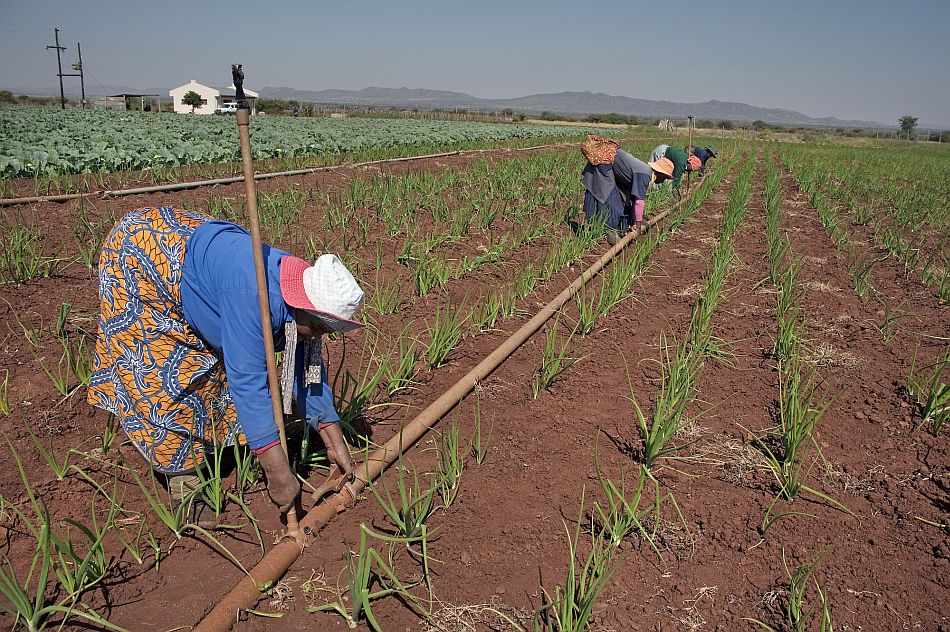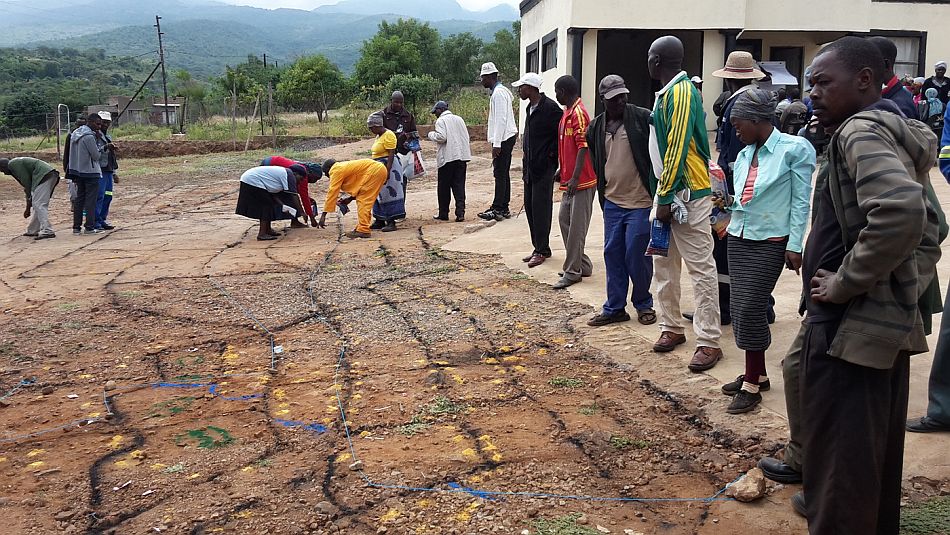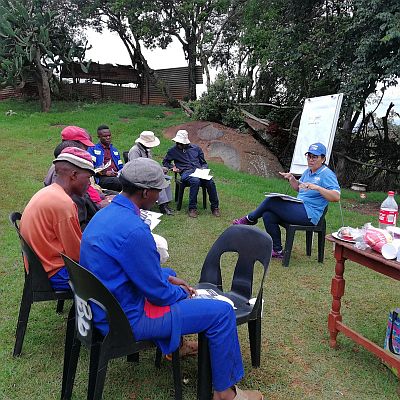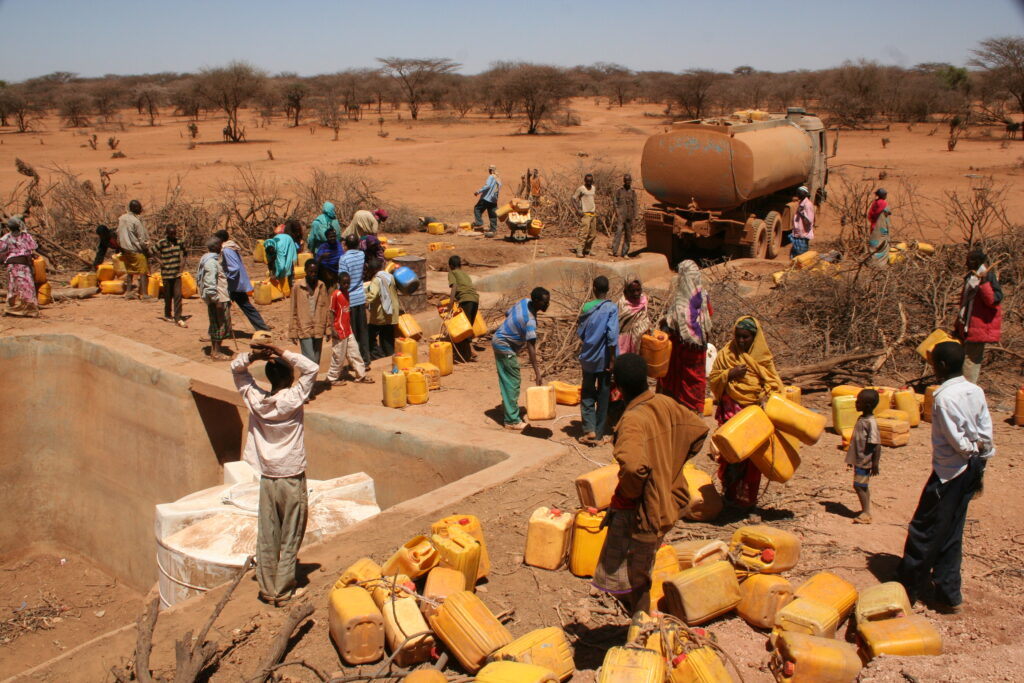An interview with Dr. Inga Jacobs-Mata
By Clara Symmes, Princeton in Asia Fellow, IWMI
This year’s World Environment Day, the UN and its partner organizations will rally around the theme of #generationrestoration to celebrate and engage individuals and organizations with projects that work to care for our environment.

In her roles as Country Representative to South Africa and Regional Representative to Southern Africa, Dr. Inga Jacobs-Mata is supporting community-based water law as a method of environmental stewardship in rural communities. Her work seeks to decolonize water access through policy-based solutions like hybrid water law.
The history and challenges of contemporary water law
As South Africa democratized in the 1990s, its water regulation system changed accordingly, and became a pioneering beacon of participatory water reform at the time. However, more than twenty years on, several legal tools have not achieved the level of transformation envisaged back then. For example, the Existing Lawful Use (ELU) clause in the country’s National Water Act of 1998 declared that lawful water uses prior to 1998, primarily by white and wealthy farmers, could continue but had to be converted into licenses within an – expectedly – short period. Meanwhile, smallholder farmers – mostly in rural, historically disadvantaged, black communities – were left with the burden of navigating the bureaucracy of the new water permit system without any explicit recognition of their customary water tenure.
The National Water Act lumps together everyone using water over a domestic and subsistence level – from a small acreage to farmers with 1000 hectares of crops. Historically-disadvantaged smallholder farmers who just barely exceed these limits face criminalization if they do not obtain a permit, which can be both situationally and financially challenging to do in rural communities. The permit system, combined with the ELU left South Africa’s water reallocation agenda relatively unchanged, with the majority of water in the hands of white landowners.
An introduction to hybrid water law
Dr. Jacobs-Mata describes hybrid water law as “the alignment of a suite of legal tools, coming from statutory law, but also customary, religious and other legal systems,” meaning a combining of state-managed and traditionally-managed water regulation. She has been working with her team in South Africa to reform water law in a way that tries to emphasize the need for blended systems that meet the needs of the most vulnerable groups of society.
“In the Inkomati catchment in the Limpopo province, about 70 to 90% of the water is used by only 10% of users,” says Dr. Jacobs-Mata. “The clear majority of users in this area only use a fraction of the actual water there. And we’re making it so difficult [and expensive] for them. Instead we should really be trying to put stricter regulatory measures on the big users.”
Hybrid water law plays to the strengths of both customary and statutory legal systems. Permits can continue to act as a regulatory tool for large users of water, while water distribution, disputes, and irrigation design can be handled directly by and for the rural communities with lower rates of usage.
Multiple use water services, or MUS, seeks to engage rural communities more directly in water infrastructural development. Rather than contracting with an outside firm to develop an irrigation system, a reticulation system, or drilling a borehole, for a community they are unfamiliar with, the community members themselves work as the contractors. They draw out the plan that will meet their needs, hire community members, and build the system themselves. These holistic approaches provide jobs, are less expensive, enhance community investment, and result in systems that are more appropriate for the community.
Read more of our interview with Dr. Jacobs-Mata below.
How can hybrid water law be used as a tool for environmental stewardship?
Environmental stewardship is about the collective. It’s about how different stakeholders are partnering together to address a shared or collective water threat or environmental threat. And hybrid water law is giving voice to vulnerable groups and other kinds of non-mainstream legal ways of managing water that allow for these different stakeholders and partners to better engage in stewardship.
How are communities in Southern Africa or in South Africa practicing environmental stewardship?
Multiple use water services are one way in which in which we practice environmental stewardship, and specifically how we operationalize community-based approaches. But there are many other ways: public private partnerships and joint ventures are other examples. Stewardship is a broad term to describe different kinds of collective action approaches to addressing a shared threat. It [the threat] could be that our water quality is really bad right now. And it affects industry; it affects community; it affects government. How do we work together to address it?
Could you tell me about an ongoing MUS project?
In one of the villages [in Limpopo, South Africa], they needed a to get water from a spring high up in the mountains down to the community living in the valley below. They had some water in some areas of the community, but not in new settlements further away. So, they needed to extend the pipeline from the spring. And basically, the community mobilized. They got a group together, and they planned, they prioritized, and they laid the pipe, to provide water to the extension of the community. And now it’s up to them to maintain and operate that system.

How can hybrid water laws support equity in communities and the environment?
I think hybrid water law is all about trying to institutionalize equity in how we legally manage water. It’s about decriminalizing vulnerable users through a more expanded conceptualization of how we manage water – one that is a little bit more tolerant or all-encompassing of non-statutory systems.
So how do you get governments to invest time and money into making those changes in water law?
The government sees our evidence for new approaches as a partnership. And once you get decision makers to see it in that way, we are helping them. Water stewardship is saying, “Yes, there is a space for government to regulate, there’s a space for government to oversee, but everyone is accountable.” Everybody’s got a collective responsibility. I think there’s now generally that recognition, and it’s starting to make waves in South Africa and other parts of the world.
What upcoming projects with IWMI are you really excited about?
Now that we’ve achieved ‘proof of concept’ and successfully piloted MUS in several communities in South Arica, we are now working with the partners such as the Department of Water and Sanitation, and the Water Research Commission, to look at how we improve the water services planning cycle at the local government level, so these community-based approaches are not just isolated projects, they’re actually built into local water service planning across the country. Because you still need that at the end of the day, you still need a municipal government to see this as part of their planning and their offering to communities. The need to build these approaches into their budgeting cycles.
On another level we are now designing a regional initiative for Eastern Southern Africa that is going to look at, how we achieve water security and climate resilience in agricultural livelihoods for Eastern and Southern Africa The most rewarding thing so far about it is that we are visualizing what water, food and land systems transformation looks like for our region at a large scale. And we are doing that as a One CGIAR with partners – it’s been an intense but really empowering experience so far.

For us in Southern and East Africa, it’s about building resilience to more effectively manage chronic water scarcity, and the growing frequency and severity of natural disasters such as floods and droughts. Resilience also means diversifying our food systems from maize-mixed systems to even more diversified production systems, markets and more diversified diets. How do we de-risk so that farmers are more resilient and build adaptive capacity? How do we empower vulnerable groups such as women and youth? How do we grow enterprise development? But in that, how do we still restore and conserve land and water systems? I’m really looking forward to that.
Where do you feel hopeful about the future of the environment in Southern Africa?
I’m an idealist, so I feel hope with so many things. But I think I feel a lot of hope, and also a bit of responsibility, in how we mobilize youth to be able to drive change. I see a lot of exciting things happening around environmental advocacy led by youth. And I think if we can help to organize that and channel that into these bigger projects, then It will help to shift the dial on our mega challenges in the region such as youth unemployment, poverty, inequality.
















